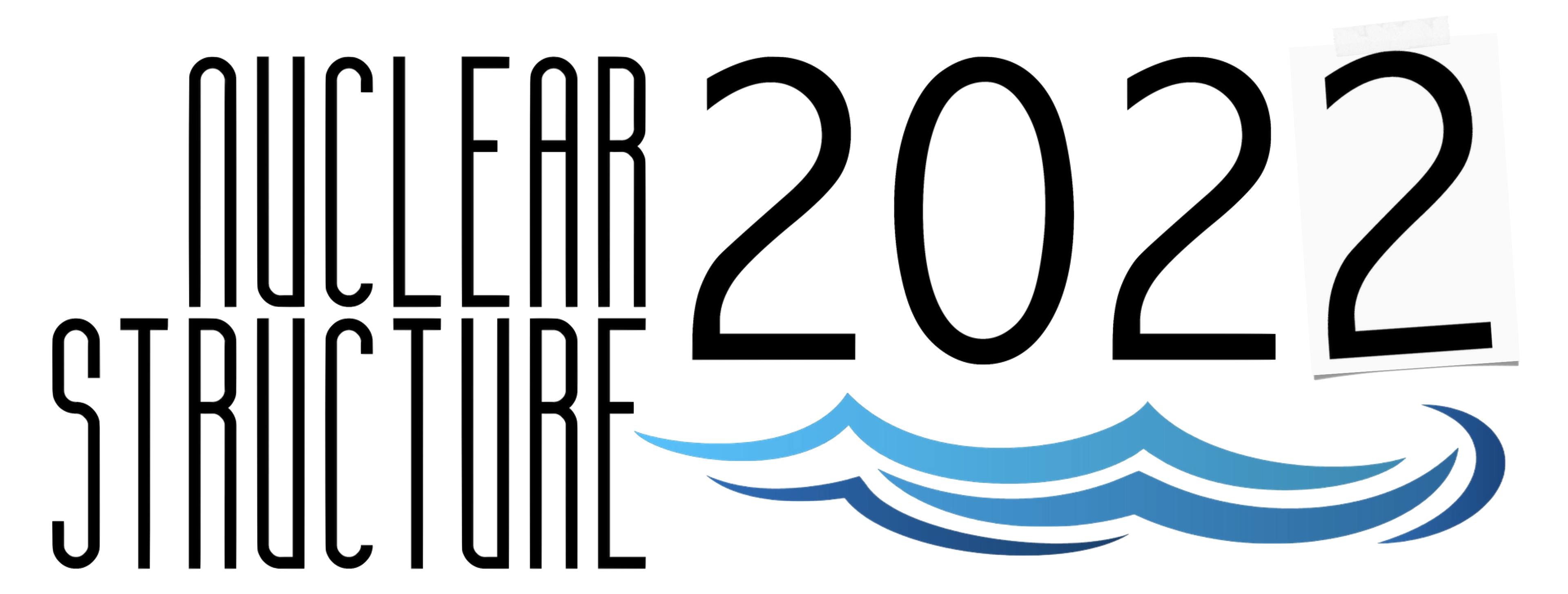Speaker
Description
The interaction between electrons and the atomic nucleus introduces an avenue for laser spectroscopy measurements to probe changes in the nuclear structure across an isotopic chain, providing a nuclear model-independent method to determine fundamental properties such as the spin, the mean-squared charge radius, and nuclear moments. Laser spectroscopic techniques have been historically successful for wide swaths of the chart of the nuclides, but only recently has the heavy actinide region become accessible through the RAdioactive decay Detected Resonance Ionization Spectroscopy (RADRIS) technique [1,2] used at the Separator for Heavy Ion Products (SHIP) at GSI, Darmstadt, Germany. Experimental access to actinides has opened a window to unusual features in the nuclear structure. Stretching from the $N$ = 126 to the $N = 152$ shell closures, the actinides feature both oblate and prolate nuclei, the presence of $K$-isomers, and rotational bands that are all hallmarks of deformation. Additionally, the large Coulomb repulsion in the heavier actinides results in a central depression in the nuclear density and has been theorized to potentially result in bubble nuclei [3]. The RADRIS technique was used to identify the first atomic transition [4] as well as to determine the nuclear charge radii and nuclear moments of $^{252-254}$No [5]. New technological developments have extended the range of lifetimes accessible by the RADRIS technique and permitted measurement of $^{248,249,250,254}$Fm, crossing the shell closure at $N$ = 152, with additional measurements of $^{255,257}$Fm performed offline with reactor bred samples from Oak Ridge National Laboratory, Oak Ridge, USA, and extended the isotopic chain of nobelium to $^{255}$No. The results of these measurements, which have posed a challenge for existing theoretical models, will be discussed. The development of a new laser spectroscopic technique for use at GSI will be discussed, where nuclear reaction products are measured in a hypersonic gas jet [6,7], retaining the high sensitivity of the RADRIS technique but improving the achievable spectral resolution by an order of magnitude in addition to providing access to short-lived species such as the 275 ms $K$ = 8$^-$ isomer in $^{254}$No.
[1] H. Backe et al., Eur. Phys. J. D 45 (2007) 99-106
[2] F. Lautenschläger et al., Nucl. Instrum. Meth. B 383 (2016) 115-122
[3] J. Dechargé et al., Nucl. Phys. A 716 (2003) 55-86
[4] M. Laatiaoui et al., Nature 538 (2016) 495-498
[5] S. Raeder et al., Phys. Rev. Lett 120 (2018) 232503
[6] R. Ferrer et al., Nat. Commun. 8 (2017) 14520
[7] S. Raeder et al., Nucl. Instrum. Methods. Phys. Res. B 463 (2020) 272-276

